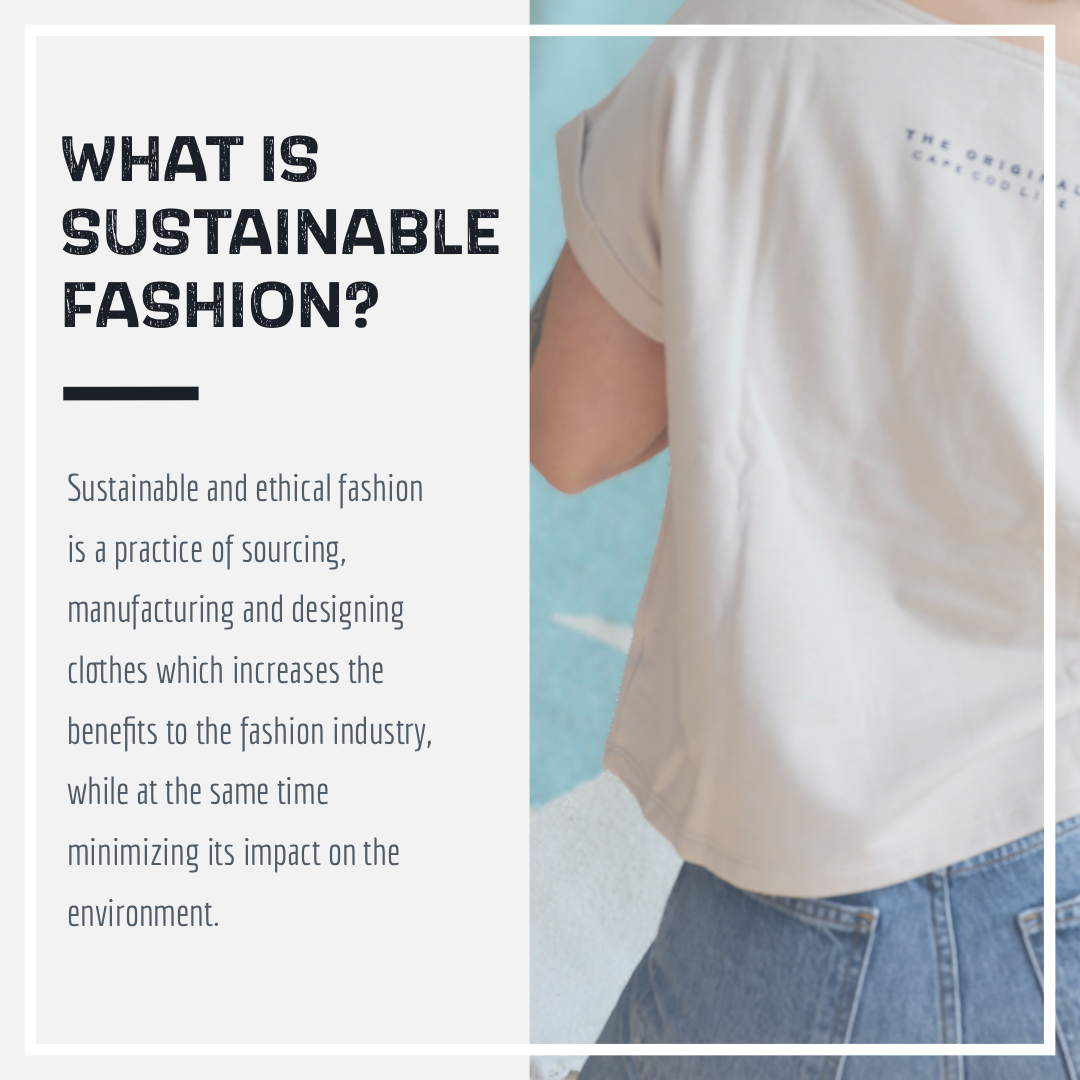
Why is fast fashion not sustainable?
Share
Why is fast fashion not sustainable?
The fast fashion industry has been a huge part of our economy in recent years, but this unsustainable growth is having a huge impact on our environment and our economy. By 2020, it's estimated that fast fashion production will increase by 50 percent. The fashion industry has changed dramatically in the past few decades. While this is good news for the fashion industry, it is bad news for those who want to care for the environment. It's not enough to say that we should advocate for sustainability because it's the right thing to do; we must also do something to stand up to the fast fashion giants.

Fast fashion is a problem because it is a waste of resources. The fashion industry is huge, so fast fashion means we are using up tons of materials and energy to make clothes for a small number of people. When we buy fast fashion, we "overconsume". Overconsumption happens when we use up more natural resources than there are left. The fashion industry is one of the largest polluters on the planet, and I think it's safe to say that fast fashion is the leading cause of this.
How fast fashion is killing the earth?
One of the world's biggest polluters, fast fashion is the industry that is responsible for more than half of the carbon emissions in the U.S., estimated. For those who love clothes and fashion, it’s important to consider the impact that the apparel industry has on the environment. In order to reduce our collective carbon footprint, we need to work toward creating more sustainable ways to make, distribute and consume clothes.
Related: What Constitutes As Handmade Jewelry?
The Environmental Impact
We might not consider clothing to be particularly intensive when it comes to emissions, after all, they are just small pieces compared to other types of waste. However, the production of these clothes on such a mass scale can have a huge impact on emissions, water consumption, pollution, and waste generation.

Emission
Clothing and textile manufacturers contributed more total emissions in 2015 than all international flights and maritime shipping combined. The textile industry generates roughly 5% of world emissions in total, but this figure could climb as rapid fashion and demand for low-cost garments grow. Consider the synthetic materials polyester, nylon, spandex, and others, which are routinely used in many different forms of clothing. 342 million barrels of crude oil are needed each year to make these synthetic fibers.
As supply chains have become more global, much of our apparel is now manufactured elsewhere in facilities that use fossil fuels before being brought back to Western markets by plane or boat. This is yet another significant source of emissions in the textile sector. A handful of fashion firms are assisting in cleaning up their supply chain in order to be more responsible, while quick fashion is doing very little.

Water Use
While more natural materials, such as cotton, have a lower carbon footprint than garments made from synthetic, oil-based fibers, they are frequently far more water thirsty. Using cotton as an example, the production of a single cotton-based jacket can consume almost 10,000 gallons of water! Not only that, but textiles like denim demand massive amounts of water usage, which, as we reach a hotter, drier time in the life of this planet, will exacerbate water stress in countries and areas that are already struggling to fulfill their own needs.
Water consumption in textile production is a major issue in and of itself, but it is not the only detrimental influence this business has on water. Pesticides used on clothing crops can significantly decrease the quality of soils on many of these farms, as well as contaminate water sources.
Dyes and chemicals used in the textile dying process can potentially be harmful to human health and the environment. Many of the fabric dying procedures occur in nations with lax environmental restrictions, allowing many to get away with damaging local water supplies, often resulting in ill health for local populations.
Because of the same toxic chemicals and synthetic materials utilized, clothing cannot be burned and recycled into the biosphere as it formerly could. While these chemicals may cause no or very little harm when worn, they can be activated when burned, producing toxic fumes and letting dangerous chemicals leak into the ground and soils.

Waste
If fast fashion continues to grow at its current rate, we will generate an increasing amount of garbage. Waste clothing used to be biodegradable or easily recyclable because it was produced from natural fibers. However, the use of synthetic materials in clothing production makes this unfeasible. Clothing is no longer designed to be recycled, and as a result, it frequently ends up in landfills because there is nothing else that can be done to repurpose or recycle it.

Greenwashing
Some fast fashion companies have attempted to portray themselves and their clothing lines as ecologically friendly, however, this is often greenwashing (a kind of strategy to make the brand or company sound a lot more sustainable or environmentally friendly than they actually are). Fast fashion businesses are growing more transparent about their supply chains, but they are still a long way from being able to call themselves sustainable.
In an article we wrote recently, we talked about Defining a Sustainable Fashion Brand, we've covered the details on how a consumer can determine whether a brand is genuinely sustainable, or is practicing "greenwashing".
